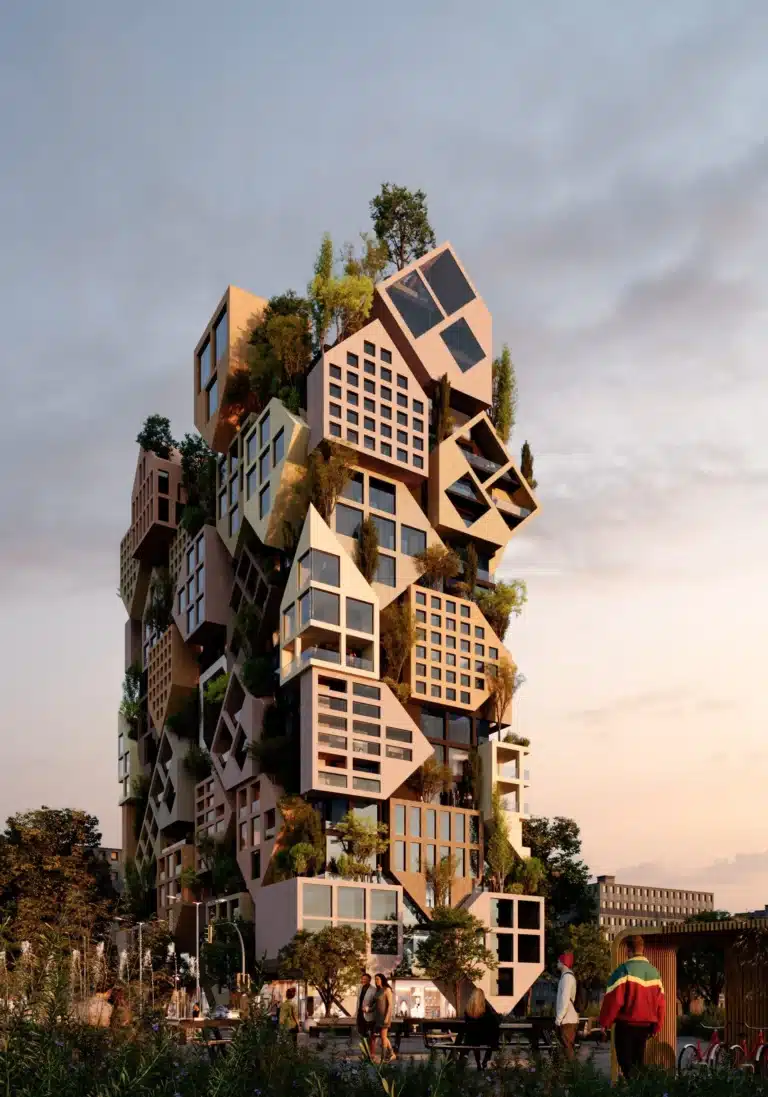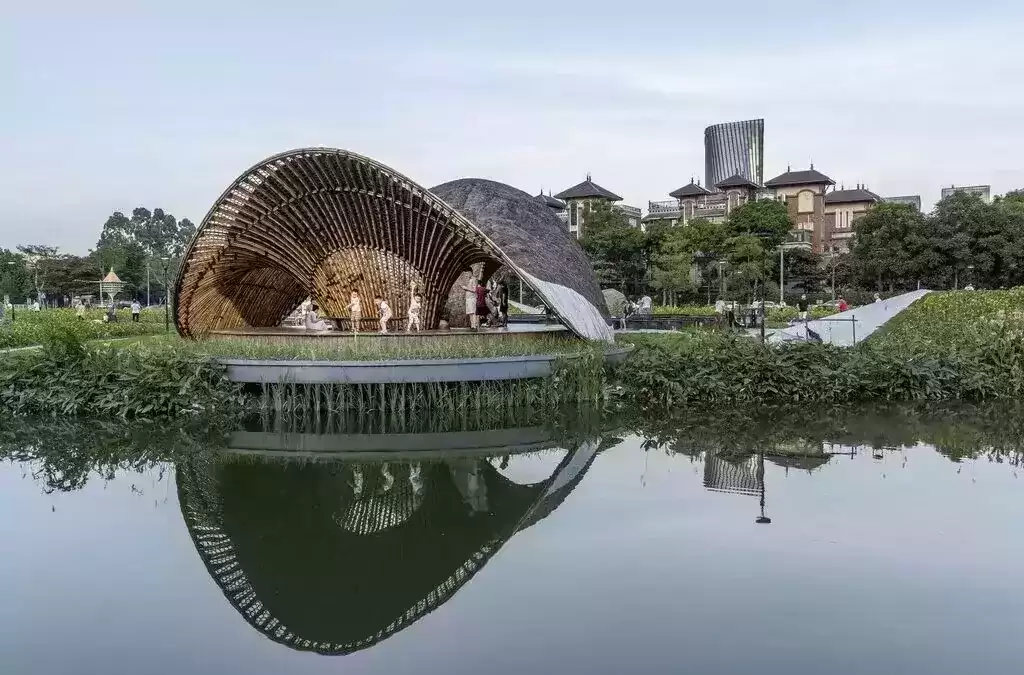Robots and AI at Venice Architecture Biennale 2025: Shaping the Future of Human Existence
The Venice Architecture Biennale 2025 is showcasing a groundbreaking vision of how robots and AI will help humans thrive in future cities—both on Earth and in space. From wearable tech for astronauts to self-aware humanoids, the exhibition at the Arsenale highlights the growing synergy between humans and machines in architecture, construction, and space exploration.
This year’s Biennale proves that AI and robotics are not here to replace humans but to enhance our capabilities, making life more sustainable, efficient, and even artistic. Below, we explore the most fascinating installations and what they reveal about the future of human-robot collaboration.
BioSuit: Wearable Tech for Astronauts:-
One of the standout exhibits is the BioSuit by Dava Newman and Guillermo Trotti, a 3D-printed, sensor-enhanced spacesuit designed for lunar and Martian missions. Key features include:
- Custom-fit design using computational modeling for each astronaut’s body.
- Wearable sensors & actuators for real-time health and environmental monitoring.
- Thermal and radiation shielding to protect against extreme space conditions.
- Active compression materials that improve mobility and reduce fatigue.
This innovation demonstrates how AI-driven design and robotics can enhance human survival in extraterrestrial environments.
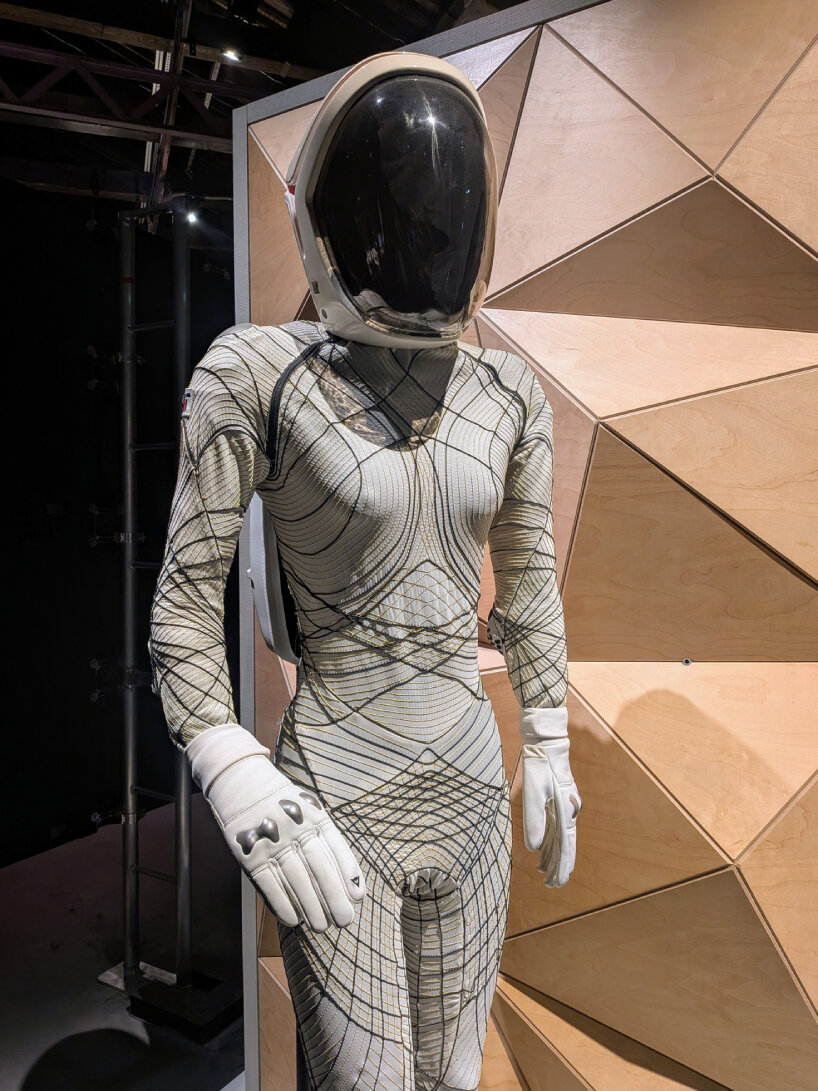
Lunar Ark: A Robotic Data Sanctuary on the Moon:-
Another futuristic concept is the Lunar Ark by IVAAIU City, a robot-assembled data center on the Moon. Why? To safeguard Earth’s critical data from climate disasters.
- Robotic construction: Autonomous machines assemble the infrastructure.
- Optical laser communication for system updates.
- Spot, the robot dog (by Boston Dynamics), is used to demonstrate mobility in lunar conditions.
Bjarke Ingels Group’s Robotic Woodcarving:-
A striking installation by Bjarke Ingels Group, Laurian Ghinitolu, and Arata Mori features a six-meter diamond-shaped wooden beam—partly carved by a human, partly by a robot arm using AI.
- Not about replacement: The exhibit emphasizes collaboration, not automation replacing artisans.
- Precision + creativity: The robot handles repetitive tasks, while humans add artistic touches.
This fusion of traditional craftsmanship and AI suggests a future where machines amplify human skills rather than eliminate them.
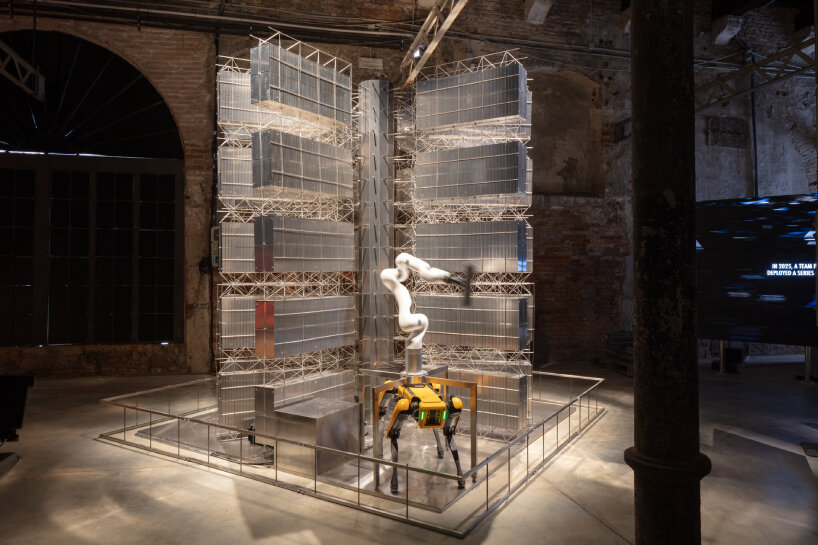
CO-POIESIS: When Robots Dance & Make Music:-
Philip F. Yuan and Bin He’s CO-POIESIS pavilion is an interactive spectacle where:
- Two wired robots—one plays a steelpan drum, the other dances.
- Visitors can join: When a person plays an external drum, the robot mimics the rhythm, and the second robot dances in response.
This playful yet profound exhibit shows how AI can engage with humans in creative, real-time interactions, blurring the line between machine and artist.
Alter3: The Humanoid That Thinks & Speaks:-
The installation “Am I A Strange Loop?” by Takashi Ikegami and Luc Steels features Alter3, a humanoid robot with:
- A clay-like face and hands for expressive movement.
- Advanced language models for conversations with visitors.
- Perception, memory, and motion control systems that simulate decision-making.
Researchers suggest that self-awareness in robots could emerge from feedback loops—where a machine’s actions influence its own learning process.
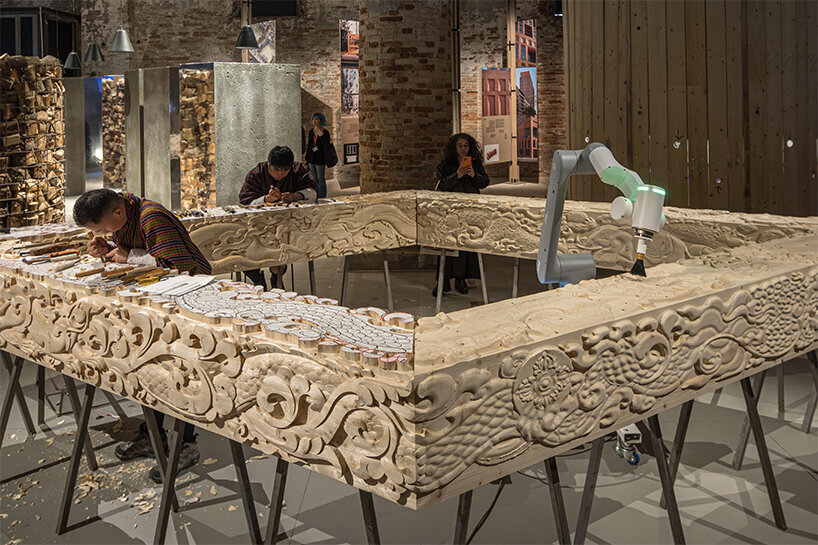
Machine Mosaic: AI That Builds & Learns:-
Daniela Rus’ Machine Mosaic showcases a humanoid robot capable of bricklaying and mosaic assembly.
- Computer vision allows it to interpret and replicate patterns.
- Repeated assembly/disassembly demonstrates precision in construction tasks.
This experiment explores whether AI can develop situational awareness, adapting its actions based on environmental input.
Final Thoughts: Will Robots Redefine Human Existence?
The Venice Architecture Biennale 2025 doesn’t just display futuristic tech—it asks profound questions:
- Will robots remain tools, or will they evolve into autonomous beings?
- How will AI reshape urban living and space habitats?
- Can human-robot collaboration lead to a more sustainable future?
One thing is certain: The future is collaborative, and the Biennale proves that humanity’s next chapter will be written alongside machines.




